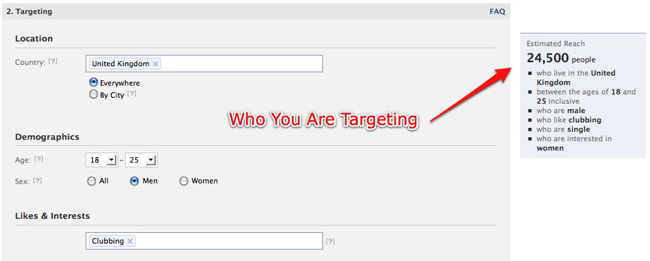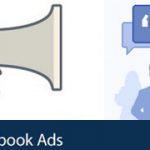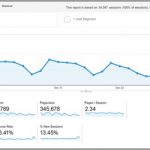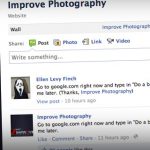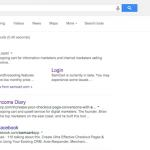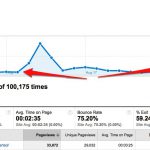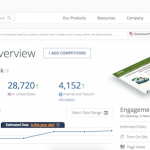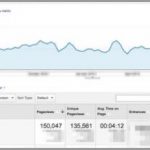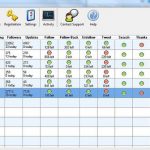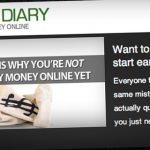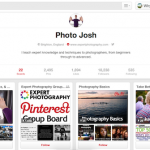![]()
This is a guide to help you set up your first ad campaign on Facebook – one of the cheapest and highest converting traffic sources on the net!
So I’m not really big on hype – but it’s hard for me to contain my excitement when talking about Facebook advertising (or any online advertising, for that matter. I’m a huge geek.) There is literally nowhere else on the internet, or in the offline world (that I know of) that has such comprehensive targeting abilities. You can target 24 year old single women that like to read “Think And Grow Rich”, are conservative, play Farmville, located in New York City, on their birthday. Not that you’ll ever really need to go in-depth, but the point is – if you know anything about your customer, you will be able to find them on Facebook.
The best part is that with this insane targeting ability, you are able to put yourself in a position where you’re dealing with minimal advertiser competition.
So let’s run through Facebook Advertising, shall we?
There are 5 keys to advertising on Facebook, they are:
- Read The Help Section!
- Targeting
- Ad Copy/Pictures
- Landing Page
- Testing, Testing, and more Testing
Read The Advertiser Help Section
The first thing you should do before you jump into advertising on Facebook is run through their help center. It should only take 20-30 minutes at the most and will give you a good foundation and understanding about their program.
Targeting
Here’s a rundown of what you can target on Facebook:
- Age
- Location
- Gender
- Sexual Preference
- Birthday
- Relationship Status
- Languages
- Interests (Books, Movies, Applications, Games, Political Views, Job Title, Religion)
- Education
- Workplace
- Connections (Groups, Pages, Events, Applications)
The ability to niche-down your targeting allows you to get the absolute best quality visitors to your site (the ones most likely to be interested in what you have to offer), and allows you lots of room to avoid dealing with competition. The tighter you get with your targeting, the less competition you will have, and the cheaper your advertising costs will be.
So here’s how I approach targeting. Before I even begin any ad creation on Facebook, I want to do research about my target audience first. The main way that I get information about my audience is through Quantcast. If you are unfamiliar with Quantcast, it’s basically an analytics-type plugin that some websites use on their pages that records demographic and traffic information about their site. Quantcast also can give you data on sites that don’t use their plugin (the data is estimated, but it’s pretty accurate).
If my site already is receiving significant traffic, I would check out that URL on Quantcast. If I’m running an affiliate offer, I would check that sites URL on Quantcast. If I have no traffic and I’m not running an affiliate offer, I would use the URL of my competitors sites to get a feeling for their audiences.
Once you enter in the URL, you’ll get a page back that looks like this.
The data is presented in two ways – the percentage on the left is the % of the sites visitors that are in that demographic, and the number on the right is the index of the amount of visitors to the site in that demographic related to the internet average. So 100 is the internet average – if your site is a 213 index for African American, that means your site has around 2.13x the average amount of African American visitors to it compared to the rest of the internet.
I am usually just focusing on the gender demographic and the age demographic for my baseline targeting. The other information is good just to give you ideas for what kind of copy/pictures to use in your ad.
Some other resources to learn more about your audience are Google’s AdPlanner, Alexa’s Audience tab, and simply making a Facebook account of your target demographic. If you’re looking to target 34 year old single men, you can make an account that age and see what kind of advertisements pop up. This will give you a better feel for what your competition is doing, and give you some ideas for what types of ads to run with.
- Ad Copy
Here’s where you need to dig into your copywriting skills. If you haven’t read Breakthrough Advertising by Eugene Schwartz – purchase it immediately. It’s pretty much the best copywriting book ever written and also has a chapter with 37 different types of headlines to use (very helpful for Facebook copy, as your headline is extremely important)
Here’s some copywriting tips broken up into the 3 sections – Headlines, Pictures, and Body Copy.
Headlines
- Capitalization (capitalize the first letter of each word, try capitalizing full words if you can (“FREE!”))
- Punctuation – Use different punctuation to make your ad stick out from the crowd ($, “”, –), also use exact numbers (43,382 instead of 40,000)
- Questioning – Ask your audience a question, challenge them (“Can You Handle It?”) – these types of ads generally get pretty good clickthrough rates.
- X vs. Y (Nascar vs. Indycar, Dogs vs. Cats) – take advantage of hot debates that are going on in your niche.
- Shock Headlines (“Steal This Car.”) – they attract more attention and will definitely help increase clickthrough rates.
- Keyword – Use the keyword that you’re targeting in your headline (“Like Think and Grow Rich?”)
Pictures:
Pictures are the most important aspect of Facebook ads – they are the first thing that people see, so it’s extremely important to stick out from the crowd. It’s also important that your picture isn’t deceptive – it might get you clicks, but it’s not going to help you make sales.
- Sex sells – if you can get away with it, use attractive people in your pictures.
- Bright colors – The more you can make your picture stand out, the better. Try putting some neon colors in your picture using MSPaint.
- Borders – You can also try adding borders or mini graphics on your pictures (stars, etc.)
- Text – You can white out the bottom of your picture and add in some extra copy.
Body Copy:
- Call to action – This is EXTREMELY important – the person has read your ad – what are they supposed to do next? Tell them what they need to do (“Click Here!”)
- Scarcity – Tell them that it’s a limited time offer, that there’s a limited quantity of your product, or that the offer will be coming down by xx date. This incentivizes them to click now.
- XX Value – FREE! – Explain the value of the purchase that they are about to make in exact numbers ($457 instead of 400)
- Truthfully, body copy doesn’t have that great of an effect on your clickthrough rate, though it can have a large effect on your conversion rate. Make sure that your copy is not deceptive.
Landing Page
It is very hard to get sales letters to work on Facebook. The simple fact of the matter is that people on Facebook are not really looking to be sold to – they are not in a buyers mindset. The key is to send them to a page that offers free information. Sometimes you can send them to a page that has an email opt-in, or you can make the process longer and put a page in between your ad and the e-mail opt in page. We’ve had pretty good conversions with pages that look like the one to the right. We offer a free report in exchange for the users name & e-mail.
It’s important to make these pages non-threatening. The way we did this was through keeping the colors on the page similar to Facebook. If possible, try to use the same fonts. This doesn’t necessarily mean that this will always work – it’s just what has worked for us in our campaigns. Generally, the shorter pages on Facebook convert better.
The most important thing is to make sure your page is relevant to your ad. If there is a disconnect (A picture of a model in a bikini leading to a car insurance offer), your ad will obviously not convert. Also – the more relevant your page is in terms of your targeting, the better. So if you’re targeting 18-24 year olds – mention something about being 18-24 on your landing page.
Testing
Before we go into testing – let me just quickly run through how bidding works on Facebook. First and foremost, you do not want to start your bids at Facebook’s suggested bid. They are always going to overestimate how much your clicks will cost (so they can make more money!), so we usually start at 50 cents and lower from there.
Facebook’s bid prices are determined based on your clickthrough rate. The higher your clickthrough rate, the cheaper your clicks. So with that in mind, you want to maximize your clickthrough rate. However, you want to make sure you are not doing this at the expense of your conversion rate – as if you aren’t making any sales, who cares how many people are clicking on your ad, right?
I always do CPC bidding. You used to be able to bid CPM rates and get much cheaper clicks, unfortunately, Facebook just recently changed their policies so that now if you bid CPM, they will send you less clicks.
The last thing to know about bidding is that if you lower your bid prices too much, you will stop receiving impressions. We generally will lower our bids slowly – usually down to whatever average CPC we are receiving. However, Facebook bids are can be screwy, so it’s important to test as sometimes no matter what you do, traffic will stop flowing to your ad.
When we’re testing a campaign, we usually start off with 15 different ads/pictures. You don’t necessarily have to go this crazy, but it can definitely help expedite the optimization process. Make sure when you’re starting that your ads/pictures are completely different from each other – this way when the results come back, you know for a fact that x ad is better than y ad.
Once you’ve run your ads for a day or two, sort through them and turn off all the ads that are getting low clickthrough rates. We usually are searching for .08% CTR – however, you need to make sure you understand your numbers. What I mean by this is, you might have a CTR that is below .08, but a conversion rate with that ad that is very high, and therefore justifies the cost of the ad. Make sure you’re tracking conversion rates with Facebook’s conversion pixel for this.
Anyway – so as we eliminate poorly performing ads, we want to take our best performers (best copy, best picture) and try to mix them around some more (Try new pictures, try new copy, mix and match) to see if we can optimize them even more. You pretty much repeat this process until you’ve got a profitable campaign – and then you can scale it by increasing your daily budget, and making copies of your best performing ad.
I hope that I was able to provide a comprehensive enough guide for readers here at IncomeDiary! Happy bidding on Facebook!
